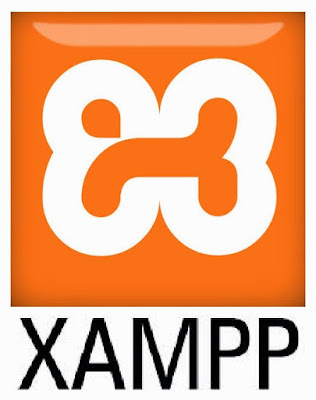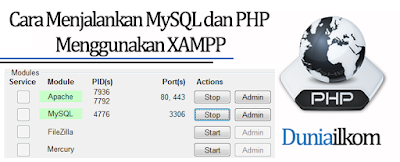JAVA SCRIP
Kenapa Harus JavaScript?
JavaScript adalah bahasa (pemograman) yang hebat, meskipun cenderung sulit untuk dipahami, akan tetapi kemampuan inti yang dimiliki oleh JavaScript sangat menarik untuk didalami. dengan Javascript anda dapat membuat aplikasi - aplikasi hebat seperti Google Maps. JavaScript telah merubah pandangan dunia terhadap internet ( Web ).Keunggulan javascript yang juga dikenal dengan nama ECMAScript yaitu dapat berjalan di semua platform dengan browser yang mendukung JavaScript, dan hampir semua platform dan browser saat ini mendukung JavaScript. Contoh dari aplikasi yang dibangun dengan JavaScript adalah Google Maps yang dapat berjalan di atas Linux, Windows, dan Mac OS. JavaScript juga semakin dan terus berkembang, seperti pertumbuhan pustaka (library) yang memudahkan untuk menavigasi dokumen, memlilih elemen DOM, membuat animasi, menangani event dan mengembangkan aplikasi Ajax. JavaScript adalah bahasa pemograman client-side yang cross-platform (berjalan di banyak platform) dan bersifat bebas (untuk dimodifikasi dan gratis tentunya) juga diadopsi secara unversal.
Hal yang sebaiknya kamu tahu
JavaScript adalah bahasa pemograman yang mudah untuk di-implementasikan dalam pembuatan program atau app. Anda hanya membutuhkan text editor seperti notepad,notepad++ dan web browser untuk memulainya.Terdapat banyak sekali yang dapat diintegrasikan dan dikembangkan ke dalam JavaScript, Namun pada tutorial ini anda akan mempelajari dasar terlebih dahulu, pertama anda membuat app sederhana terlebih dahulu, bukan sekelas Google Maps, tidak mungkin itu terjadi pada hari pertama belajar JavaScript!.
Pendahuluan
Untuk memulai belajar JavaScript benar - benar sangat mudah. Anda tidak perlu repot - repot menginstall software bahasa pemograman, anda juga tidak harus tahu bagaimana menggunakan shell, pengetahuan membuat program atau menggunakan compiler. JavaScript sudah terinterpretasi oleh web browser anda. Hal yang perlu anda lakukan hanyalah menyimpan dokumen JavaScript sebagai file text biasa kemudian jalankan di web browser. hanya itu!JavaScript sangat cocok untuk mengenalkan anda pada bahasa pemograman komputer, Penulisan JavaScript juga sama halnya dengan bahasa pemograman C, C++ dan java, bahasa pemograman yang banyak kontribusinya dalam bidang development.
Masalah Kompatibilitas Browser
There are variations between what functionality is available in the different browsers. Mozilla, Microsoft IE, Apple Safari and Opera fluctuate in the behavior. We intend on documenting these variations. You can mitigate these issues by using the various cross platform JavaScript APIs that are available. These APIs provide common functionality and hide these browser fluctuations from you.
Bagaimana cara mencoba contoh
The examples below have some sample code. There are many ways to try these examples out. If you already have your own website, then you should be able to just save these examples as new web pages on your website.If you do not have your own website, you can save these examples as files on your computer and open them up with the web browser you are using now. JavaScript is a very easy language to use for beginning programmers for this reason. You don't need a compiler or a development environment; you and your browser are all you need to get started!
Contoh: Menangkap event klik mouse
The specifics of event handling (event types, handler registration, propagation, etc) are too extensive to be fully covered in this simple example. However this example cannot demonstrate catching a mouse click without delving a little into the JavaScript event system. Just keep in mind that this example will only graze the full details about JavaScript events and that if you wish to go beyond the basic capabilities described here to read more about the JavaScript event system.'Mouse' events are a subset of the total events issued by a web browser in response to user actions. The following is a list of the the events emitted in response to a user's mouse action:
- Click - issued when a user clicks the mouse
- DblClick - issued when a user double-clicks the mouse
- MouseDown - issued when a user depresses a mouse button (the first half of a click)
- MouseUp - issued when a user releases a mouse button (the second half of a click)
- MouseOut - issued when the mouse pointer leaves the graphical bounds of the object
- MouseOver - issued when the mouse pointer enters the graphical bounds of the object
- MouseMove - issued when the mouse pointer moves while within the graphical bounds of the object
- ContextMenu - issued when the user clicks using the right mouse button
<span onclick="alert('Hello World!');">Click Here</span><script type="text/javascript">
function onclick_callback () {
alert ("Hello, World!");
}
</script>
<span onclick="onclick_callback();">Click Here</span><script type="text/javascript">
function onclick_callback(event) {
var eType = event.type;
/* the following is for compatability */
/* Moz populates the target property of the event object */
/* IE populates the srcElement property */
var eTarget = event.target || event.srcElement;
alert( "Captured Event (type=" + eType + ", target=" + eTarget );
}
</script>
<span onclick="onclick_callback(event);">Click Here</span><script type="text/javascript">
function mouseevent_callback(event) {
/* The following is for compatability */
/* IE does NOT by default pass the event object */
/* obtain a ref to the event if one was not given */
if (!event) event = window.event;
/* obtain event type and target as earlier */
var eType = event.type;
var eTarget = event.target || event.srcElement;
alert(eType +' event on element with id: '+ eTarget.id);
}
function onload () {
/* obtain a ref to the 'body' element of the page */
var body = document.body;
/* create a span element to be clicked */
var span = document.createElement('span');
span.id = 'ExampleSpan';
span.appendChild(document.createTextNode ('Click Here!'));
/* register the span object to receive specific mouse events */
span.onmousedown = mouseevent_callback;
span.onmouseup = mouseevent_callback;
span.onmouseover = mouseevent_callback;
span.onmouseout = mouseevent_callback;
/* display the span on the page */
body.appendChild(span);
}
</script>
Draft
This page is not complete.
This page is not complete.
Contoh: Menangkap event dari keyboard
Similar to the "Catching a mouse event" example above, catching a keyboard event relies on exploring the JavaScript event system. Keyboard events are fired whenever any key is used on the keyboard.The list of available keyboard events emitted in response to a keyboard action is considerably smaller than those available for mouse:
- KeyPress - issued when a key is depressed and released
- KeyDown - issued when a key is depressed but hasn't yet been released
- KeyUp - issued when a key is released
- TextInput (available in Webkit browsers only at time of writing) - issued when text is input either by pasting, speaking or keyboard. This event will not be covered in this article.
keyCode or charCode property; never both. If the key pressed generates a character (e.g. 'a'), charCode is set to the code of that character, respecting the letter case. (i.e. charCode takes into account whether the shift key is held down). Otherwise, the code of the pressed key is stored in keyCode.The simplest method for capturing keyboard events is again to register event handlers within the HTML, specifying the individual events as attributes for your element. Example:
<input type="text" onkeypress="alert ('Hello World!');"></input><script type="text/javascript">
function onkeypress_callback () {
alert ("Hello, World!");
}
</script>
<input onkeypress="onkeypress_callback();"></input><script type="text/javascript">
function onkeypress_callback(evt) {
var eType = evt.type; // Will return "keypress" as the event type
var eCode = 'keyCode is ' + evt.keyCode;
var eChar = 'charCode is ' + evt.charCode;
alert ("Captured Event (type=" + eType + ", key Unicode value=" + eCode + ", ASCII value=" + eChar + ")");
}
</script>
<input onkeypress="onkeypress_callback(event);"></input><script type="text/javascript">
document.onkeypress = key_event(event);
document.onkeydown = key_event(event);
document.onkeyup = key_event(event)
function key_event(evt) {
var eType = evt.type;
var eCode = "ASCII code is " + evt.keyCode;
var eChar = 'charCode is ' + evt.charCode;
alert ("Captured Event (type=" + eType + ", key Unicode value=" + eCode + ", ASCII value=" + eChar + ")");
}
</script><!DOCTYPE html>
<html>
<head>
<script>
var metaChar = false;
var exampleKey = 16;
function keyEvent(event) {
var key = event.keyCode || event.which;
var keychar = String.fromCharCode(key);
if (key==exampleKey) { metaChar = true; }
if (key!=exampleKey) {
if (metaChar) {
alert("Combination of metaKey + " + keychar)
metaChar = false;
} else { alert("Key pressed " + key); }
}
}
function metaKeyUp (event) {
var key = event.keyCode || event.which;
if (key==exampleKey) { metaChar = false; }
}
</script>
</head>
<body onkeydown="keyEvent(event)" onkeyup="metaKeyUp(event)">
</body>
</html>Bug dari browser dan quirks
The two properties made available through the key events arekeyCode and charCode. In simple terms, keyCode refers to the actual keyboard key that was pressed by the user, while charCode
is intended to return that key's ASCII value. These two values may not
necessarily be the same; for instance, a lower case 'a' and an upper
case 'A' have the same keyCode, because the user presses the same key, but a different charCode because the resulting character is different.The way in which browsers interpret the charCode is not a consistently-applied process. For example, Internet Explorer and Opera do not support
charCode. However, they give the character information in keyCode, but only onkeypress. Onkeydown and -up keyCode contains key information. Firefox uses a different word, "which", to distinguish the character.Refer to the Mozilla Documentation on Keyboard Events for a further treatment of keyboard events.
Draft
This page is not complete.
This page is not complete.
Contoh: Memindahkan gambar
The following example allows moving the image of firefox around the page.<!DOCTYPE html>
<html>
<head>
<style type='text/css'>
img { position: absolute; }
</style>
<script type='text/javascript'>
window.onload = function() {
movMeId=document.getElementById("ImgMov");
movMeId.style.top = "80px";
movMeId.style.left = "80px";
document.onmousedown = coordinates;
document.onmouseup=mouseup;
function coordinates(e) {
if (e == null) { e = window.event;}
var sender = (typeof( window.event ) != "undefined" ) ? e.srcElement : e.target;
if (sender.id=="ImgMov") {
mouseover = true;
pleft = parseInt(movMeId.style.left);
ptop = parseInt(movMeId.style.top);
xcoor = e.clientX;
ycoor = e.clientY;
document.onmousemove=moveImage;
return false;
} else {
return false;
}
}
function moveImage(e) {
if (e == null) { e = window.event; }
movMeId.style.left = pleft+e.clientX-xcoor+"px";
movMeId.style.top = ptop+e.clientY-ycoor+"px";
return false;
}
function mouseup(e) {
document.onmousemove = null;
}
}
</script>
</head>
<body>
<img id="ImgMov" src="http://mozcom-cdn.mozilla.net/img/covehead/about/logo/download/logo-only.png" width="64" height="64" />
<p>Drag and drop around the image in this page.</p>
</body>
</html>









